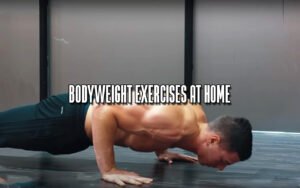
Flexibility is vital to overall health and well-being. Strength training is essential in preventing injuries and enhancing our daily activities, making them more enjoyable and effortless. While many associate flexibility solely with activities like yoga or stretching gymnastics, it is essential for individuals of all ages and fitness levels. The great news is that you can improve your flexibility from the comfort of your home. This article will delve into various gymnastics stretching exercises and techniques to help you achieve a broader range of motion.
The Importance of Flexibility
Let’s understand why flexibility is so important before we dive into the stretching routines.
Injury Prevention
Flexible muscles and joints are less likely to get strained or injured during physical activities. Proper flexibility can reduce the risk of muscle tears, sprain, and joint problems.
Improved Posture
Flexibility improves posture by allowing your muscles and joints to move freely. Good posture makes you look more confident and helps prevent chronic back and neck pain.
Enhanced Range of Motion
Increased flexibility means a broader range of motion in your joints. This is particularly beneficial as you age, as it helps you maintain independence and the ability to perform daily tasks without difficulty.
Stress Reduction
Stretching can have a calming effect on the mind and body. It helps reduce muscle tension, making you feel more relaxed and less stressed.
Better Athletic Performance
Athletes in various sports, from runners to weightlifters, benefit from increased flexibility. It can improve athletic performance by enhancing agility, speed, and overall movement efficiency.
Incorporating Stretching Routines Into Your Daily Life
Now that you understand the significance of flexibility let’s explore some stretching routines that you can incorporate into your daily life to improve your range of motion.
Stretching Basics
Before you begin any stretching routine, it’s essential to keep these fundamental principles in mind:
Warm-Up
Always warm up before stretching. A few minutes of light aerobic exercise, like jogging in place or jumping jacks, Improving blood flow to your muscles and priming them for activity can significantly enhance their performance.
Hold and Breathe
When you stretch, hold each position for about 15-30 seconds and breathe deeply. Avoid bouncing, as this can lead to injury.
Pain vs Discomfort
Stretching exercises routine should not be painful. You may feel some discomfort or tension. However, it is crucial to cease the activity promptly if you encounter any discomfort or pain.
Consistency
Consistency is critical to improving flexibility. Aim to stretch daily or at least several times a week.
Balance
Stretch all major muscle groups to maintain balance and prevent overuse injuries
Upper Body Stretching Exercises
Neck Stretch
- Sit or stand up straight.
- Gently incline your head to one side, bringing your ear closer to your shoulder.
- Hold for 15-30 seconds and switch sides.
- Repeat 2-3 times on each side.
Shoulder Stretch
- Clasp your hands behind your back.
- Straighten your arms and gently lift them while squeezing your shoulder blades together.
- Hold for 15-30 seconds.
Standing Chest Opener
- Stand tall with your feet hip-width apart.
- Clasp your hands behind your back.
- Straighten your arms and lift them slightly while opening your chest.
- Hold for 15-30 seconds.
Triceps Stretch
- Raise one arm overhead, bending it at the elbow.
- Reach down your back with your opposite hand and gently push on your bent elbow.
- Hold for 15-30 seconds and switch arms.
- Repeat 2-3 times on each component.
Lower Body Stretching Exercises
Quad Stretch
- Start by positioning yourself with your feet at a shoulder-width distance from each other. Gently bend one knee and bring your heel towards your buttocks.
- Grasp your ankle with your hand and slowly draw your heel closer.
- Hold for 15-30 seconds and switch legs.
- Repeat 2-3 times on each leg.
Hamstring Stretch
- Sit on the floor, extending one leg while bending the other. Position the sole of your foot against your inner thigh.
- Reach forward with both hands towards your extended leg, keeping your back straight.
- Hold for 30 seconds and switch legs.
- Repeat 2-3 times on each leg.
Calf Stretch
- Lean forward against the wall while keeping your back leg straight.
- Hold for 30 seconds and switch legs.
- Repeat 2-3 times on each leg.
Hip Flexor Stretch
- Position yourself on the floor by kneeling with one knee bent at a 90-degree angle.
- Shift your weight forward slightly to feel a stretch in your hip flexors.
- Hold for 30 seconds and switch legs.
- Repeat 2-3 times on each leg.
Full Body Stretching Exercises
Cat-Cow Stretch
- Start on your hands and knees. Place your wrists directly beneath your shoulders and align your knees with your hip mobility exercises.
- Take a deep breath and gently arch your back, lifting your head and tailbone in the Cow Pose.
- Breathe slowly as you round your back, gently tucking your chin and tailbone into a graceful Cat Pose.
- Flow between these two poses for a 15 minute stretch.
Child’s Pose
- Start on your hands and knees.
- Assume a seated position on your heels, gently extending your arms forward and gradually lowering your forehead towards the floor.
- Hold for 15-30 seconds.
Seated Forward Bend
- Sit with your legs extended in front of you.
- Hinge at your hips and reach forward toward your toes.
- Hold for 15-30 seconds.
Butterfly Stretch
- Sit with the soles of your feet together, and your knees bent outward.
- Hold your feet with your hands and apply gentle pressure to guide your knees towards the floor.
- Hold for 15-30 seconds.
Tips for an Effective Stretching Routine
Start Slow
If you’re new to stretching, begin with shorter hold times and gradually increase them as your flexibility improves.
Listen to Your Body
Pay attention to how your body feels during each stretch. It should feel like a gentle, gradual release of tension, not a painful pull.
Stay Consistent
Consistency is crucial for improving flexibility. Make stretching a daily habit, even just for a few minutes.
Combine with Strength Training
Flexibility and strength go hand in hand. Incorporate both into your fitness routine for a well-rounded approach to fitness.
Stay Hydrated
Proper hydration can help maintain muscle elasticity, making stretching more effective.
Consider Yoga or Pilates
These disciplines improve flexibility while providing a holistic physical and mental well-being approach.
Seek Professional Guidance
If you have specific flexibility goals or chronic conditions, consider consulting a physical therapist or fitness professional for personalized guidance.
FAQ’s
Q1. How often should I stretch to see noticeable improvements in my flexibility?
Aim to stretch at least several times a week, if not daily, to see noticeable improvements in flexibility and consistency is key. However, the frequency required may vary from person to person. Some individuals may experience improvements more rapidly than others. Pay attention to your body’s signals and adjust your routine.
Q2. Is it better to stretch before or after exercise?
Pre-exercise (dynamic) and post-exercise (static) stretching have their benefits. Dynamic stretching is ideal for warming up before physical activity, beginner stretching routine can help increase blood flow and prepares your muscles for movement. Static stretching is better suited for after your workout when your muscles are warm and can help improve flexibility. However, some experts recommend a combination of both for a comprehensive routine.
Q3. Can I overstretch and injure myself while trying to improve flexibility?
You can overstretch and injure yourself if you push your body too hard or use incorrect techniques. It’s essential to stretch gradually and avoid bouncing or forcing your muscles into positions. Focus on gentle, controlled movements, and never try to the point of pain. If you need help with proper technique or have a pre-existing injury, consider consulting a fitness professional or physical therapist for guidance.
Q4. Can specific stretches help with back pain and posture improvement?
Yes, some stretches for flexibility can help alleviate back pain and improve posture. For back pain, stretches that target the lower back, such as the cat-cow stretch and child’s pose, can provide relief. Strengthening exercises for the core muscles can contribute to better posture and reduced back pain. To improve posture, focus on stretches that open the chest and shoulders, such as the chest opener and shoulder stretch, along with exercises that strengthen the muscles that support good posture and it is also a stretching exercises for beginners.
Conclusion
Enhancing your range of motion and flexibility through regular stretching routines can profoundly impact your overall health and improve your quality of life. Whether you’re looking to enhance your athletic performance, prevent injuries.
The journey to improved range of motion and enhanced flexibility begins right at home. By incorporating these stretching and flexibility routines into your daily life, you empower yourself to move with more ease, reduce the risk of injury, and enjoy the many physical and mental benefits that come with increased flexibility. Whether you’re a fitness enthusiast, an athlete, or someone seeking a healthier, more active lifestyle, these accessible at-home practices pave the way to a more limber, agile, and balanced you. Remember, your body’s potential for greater mobility is within reach, and it all starts with the dedication to these home-based routines. Embrace the change, and experience the transformative power of enhanced flexibility. Your body will thank you.








